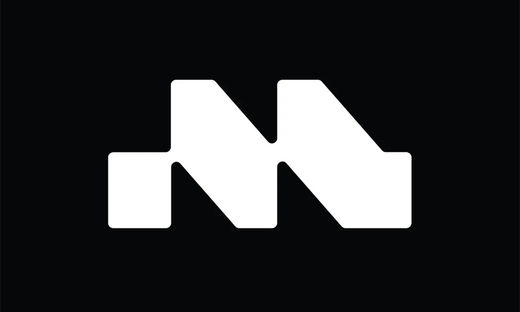How To Create Balance & Proportion In Logo Design

Balance and proportion are fundamental principles in logo design that ensure a visually appealing and harmonious composition. A well-balanced logo maintains symmetry or deliberate asymmetry, creating a design that feels stable and professional. Without proper balance, a logo may appear awkward or overwhelming, diminishing its effectiveness in brand representation.
Proportion plays a critical role in defining the relationship between different elements within the logo. Whether it is typography, symbols, or negative space, each component must be scaled appropriately to maintain a cohesive look. A well-proportioned logo appears polished and adaptable across different platforms and sizes, making it versatile for branding needs.
This article explores key strategies to create balance and proportion in logo design, providing insights into maintaining visual harmony, using grids effectively, and ensuring each element complements the overall composition. By mastering these techniques, designers can craft logos that are not only aesthetically pleasing but also strategically effective in representing a brand’s identity.
Understand the Role of Balance in Logo Design
Balance is a fundamental principle in logo design that ensures visual stability and harmony. A well-balanced logo prevents any element from overwhelming the composition, making it more appealing and professional. Without balance, a logo can feel lopsided or chaotic, which can negatively impact its effectiveness and brand perception.
There are two main types of balance in logo design: symmetrical and asymmetrical. Symmetrical balance creates a mirrored effect, where both sides of the design are equal. This approach is often used for logos that need to convey stability, tradition, and trustworthiness. Asymmetrical balance, on the other hand, allows for a more dynamic composition, where different elements are arranged in a way that maintains equilibrium without being identical.
Proportion also plays a key role in achieving balance. Each element in the logo should be sized appropriately in relation to others. Oversized graphics or typography can disrupt the harmony, making the design feel unstructured. Using a grid system can help designers maintain proper proportions and distribute elements evenly.
Differentiate Between Symmetrical & Asymmetrical Balance
Balance in logo design can be categorized into two main types: symmetrical and asymmetrical. Understanding their differences helps designers choose the right approach based on brand identity and message.
Symmetrical balance is achieved when elements are evenly distributed around a central axis. This creates a mirrored effect, where both sides of the logo are identical or nearly identical. Symmetrical logos are commonly used in industries that value tradition, stability, and professionalism, such as finance, law, and healthcare. They convey a sense of order and reliability, making them ideal for brands that want to establish trust. However, while symmetrical logos offer structure, they may sometimes feel too rigid or predictable.
Asymmetrical balance, on the other hand, is more dynamic and visually engaging. It involves distributing elements of different sizes, shapes, or colors in a way that maintains equilibrium without mirroring them. This approach allows for more creative freedom, resulting in unique and modern designs. Brands that want to appear innovative, energetic, or unconventional often choose asymmetrical balance. The key to successful asymmetry is ensuring that no single element dominates the composition, maintaining harmony despite differences in shape or positioning.
Both types of balance have their advantages. While symmetry provides a timeless, classic appeal, asymmetry offers movement and uniqueness. Designers must consider the brand’s personality and message when deciding which balance method best suits the logo design.
Use a Grid System for Proportion Control
A grid system is an essential tool in logo design that helps maintain balance and proportion. It provides a structured framework, ensuring that elements are aligned and properly scaled. Without a grid, a logo can appear unstructured, with elements feeling disconnected or improperly spaced.
Grids work by dividing the design area into equal sections, creating a guide for positioning and sizing elements. This helps prevent disproportionate compositions where one part of the logo overpowers another. By using a grid, designers can ensure that typography, symbols, and negative space are evenly distributed, contributing to a harmonious layout.
One of the key benefits of a grid system is consistency. Logos often need to be resized for various applications, from business cards to billboards. A well-proportioned design retains its clarity and impact regardless of size. Grids also aid in the placement of typography, making sure that text aligns with graphical elements without appearing out of place.
Classic design principles, such as the Golden Ratio or the Rule of Thirds, can be incorporated into the grid system to create visually appealing logos. These techniques help maintain natural balance and pleasing proportions, resulting in a design that looks professional and well-crafted.

Maintain a Focal Point
A focal point is the primary element in a logo that captures attention and conveys the brand’s essence. Without a clear focal point, a logo can feel scattered or confusing, lacking a defined visual hierarchy. A well-designed logo directs the viewer’s eye toward a key feature, ensuring instant recognition and strong brand recall.
Creating balance and proportion in logo design starts with identifying what should stand out. This could be a symbol, a letterform, or a unique graphic element. The focal point should be strategically positioned to maintain visual stability, ensuring that other elements support rather than compete with it.
Proportion plays a crucial role in emphasizing the focal point. If an element is too large, it may dominate the design and throw off balance. If it is too small, it may not create enough impact. Designers must scale and position the focal point correctly within the composition to maintain harmony.
Contrast is another effective technique to highlight the focal point. This can be achieved through color, shape, or typography. A bold color against a neutral background, a unique shape among simple forms, or a distinct typeface can make the focal point more prominent.
While a focal point should command attention, it must also blend seamlessly with the rest of the design. Every supporting element should be proportioned to complement it, not overshadow it. A well-balanced logo with a strong focal point enhances brand identity and ensures that the message is communicated clearly and effectively.
Apply the Rule of Thirds for Visual Interest
The Rule of Thirds is a design principle that enhances balance and proportion in logo design by guiding the placement of key elements. It divides the design space into a 3x3 grid, creating nine equal sections with four intersecting points. These points are ideal focal areas where important elements should be positioned to create visual interest and balance.
Using this technique prevents the logo from appearing static or overly centered. Instead of placing the main element in the middle, positioning it along one of the intersections provides a more dynamic composition. This technique is especially effective in asymmetrical logo designs, ensuring a visually engaging structure without losing harmony.
The Rule of Thirds also helps in maintaining proportion. When elements are distributed according to this grid, they remain balanced relative to each other, preventing any single component from overpowering the design. It also enhances negative space usage, ensuring the logo doesn’t feel cluttered or misaligned.
When incorporating text, symbols, or graphic elements, aligning them with the Rule of Thirds ensures a more professional and polished result. This principle allows designers to create logos that are naturally appealing, guiding the viewer’s eye smoothly across the composition while maintaining a structured and well-balanced design.
Ensure Typography Complements Graphics
Typography is a crucial element in logo design, and its relationship with graphic components significantly affects balance and proportion. Choosing the right font, size, and positioning ensures that text integrates seamlessly with visual elements rather than competing with them.
Proportion is key when combining typography with graphics. The size of the text should be carefully scaled relative to symbols or icons, preventing either from overpowering the other. If the typography is too large, it can make the logo feel unbalanced, while text that is too small may lose readability and impact.
Font style also plays a role in maintaining harmony. A bold, modern typeface pairs well with geometric or minimalistic icons, while a script font may be better suited for organic or vintage-themed logos. Consistency in style ensures that typography enhances the overall logo rather than appearing out of place.
Spacing is another essential factor. Proper kerning and letter spacing improve readability while preventing the text from looking crowded. Alignment between text and symbols ensures proportional distribution, helping maintain a balanced composition.
Contrast can also be used strategically. Designers often emphasize key words or letters using weight, color, or placement, making the typography a focal point while keeping it in proportion with the rest of the design.
Consider Negative Space for Balance
Negative space, also known as white space, plays a crucial role in achieving balance and proportion in logo design. It refers to the empty areas around and within the elements of a design, helping to define shapes, improve readability, and create a clean, professional look.
A well-balanced logo effectively uses negative space to prevent clutter and enhance visual clarity. Overcrowding a logo with excessive elements can disrupt harmony, making it difficult to distinguish key components. By incorporating negative space strategically, designers can guide the viewer’s eye and highlight important elements without overwhelming the composition.
Negative space is also essential for maintaining proper proportion. When distributed correctly, it ensures that all elements remain visually connected and well-structured. Uneven or insufficient negative space can make a logo feel unbalanced, while thoughtful spacing enhances symmetry and flow.
Beyond structural benefits, negative space can add creativity to a logo. Some of the most iconic designs, such as the FedEx or WWF logos, cleverly use negative space to form hidden imagery, making the design more memorable.

Use Geometric Shapes for Proportional Accuracy
Geometric shapes provide a strong foundation for achieving balance and proportion in logo design. Circles, squares, triangles, and other geometric forms help maintain structural consistency, ensuring that each element is visually aligned and proportionate.
Using geometric shapes in logo design enhances symmetry and stability. A circular logo, for example, conveys unity and harmony, while a triangular composition suggests strength and precision. By aligning elements with these foundational shapes, designers can create logos that feel structured and aesthetically pleasing.
Proportion is another critical factor when incorporating geometric shapes. Each shape must be scaled appropriately to maintain harmony among elements. Oversized or poorly positioned shapes can throw off balance, making the design appear unrefined. A well-proportioned layout ensures that typography, icons, and spacing work together cohesively.
Grid systems often incorporate geometric structures to help with proportional accuracy. Designers use these grids to ensure spacing, alignment, and sizing remain consistent throughout the design process. The Golden Ratio and Fibonacci sequence are also useful in achieving natural-looking proportions, making logos more visually appealing.
Balance Color Distribution
Color plays a vital role in achieving balance and proportion in logo design. A well-distributed color scheme ensures that no single area appears too heavy or too light, creating a visually harmonious composition. When colors are unbalanced, the logo can feel overwhelming or lack impact, reducing its effectiveness.
One of the key principles of balancing color is contrast. Using complementary or analogous color schemes can create a visually appealing flow without making the design feel disjointed. Bold or vibrant colors should be used sparingly, often for focal points, while neutral tones can help balance the overall composition.
Proportion is also crucial when applying colors. If a logo includes multiple elements, color should be assigned in a way that maintains hierarchy. Dominant colors should highlight the main focal point, while secondary colors provide support. Unequal distribution of color can shift attention away from key design elements, making the logo less effective.
Test the Logo at Various Sizes
A well-balanced and proportioned logo should maintain its clarity and impact across different sizes. Whether displayed on a business card or a billboard, a logo must remain visually effective and easily recognizable. Testing its scalability ensures that balance and proportion are maintained at any dimension.
One common issue in logo design is losing detail when scaled down. Small elements, intricate typography, or excessive details can become unreadable or cluttered when the logo is reduced in size. To prevent this, designers should simplify complex elements and maintain proportional spacing between components.
Conversely, when a logo is enlarged, its proportions should remain intact. A poorly proportioned logo may look unbalanced or stretched at larger sizes. Using a grid system ensures that elements scale proportionally without distortion.
Testing the logo on different backgrounds and mediums is also essential. A well-balanced logo should work equally well on a website, product packaging, signage, or apparel. Ensuring the design remains legible and visually appealing in black and white, grayscale, and full-color variations further enhances its adaptability.
Typography and spacing should also be assessed at various sizes. If the font is too thin or too tightly spaced, it may become unreadable in smaller applications. Adjusting kerning, weight, and alignment ensures legibility without sacrificing design integrity.
Conclusion
Achieving balance and proportion in logo design is essential for creating a visually appealing and professional brand identity. By carefully considering elements such as symmetry, grids, typography, color distribution, and negative space, designers can ensure a harmonious composition. Whether using the Rule of Thirds, geometric shapes, or contrast techniques, each design choice should contribute to a well-structured and proportionate logo. Testing the logo at various sizes further ensures its effectiveness across different applications. A well-balanced logo not only looks aesthetically pleasing but also enhances brand recognition, making it a powerful and lasting representation of a company’s identity.
Let Us Know What You Think!
Every information you read here are written and curated by Kreafolk's team, carefully pieced together with our creative community in mind. Did you enjoy our contents? Leave a comment below and share your thoughts. Cheers to more creative articles and inspirations!
















Leave a Comment